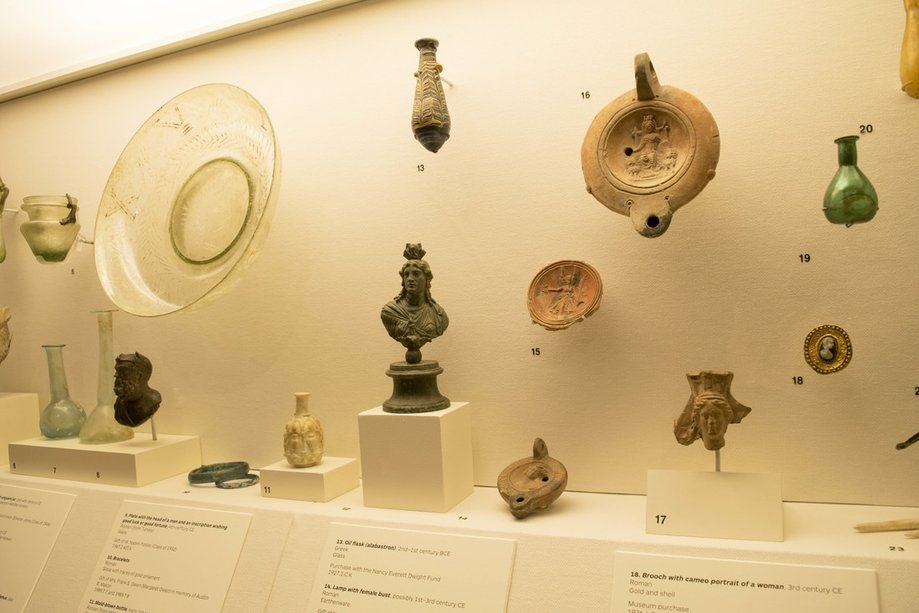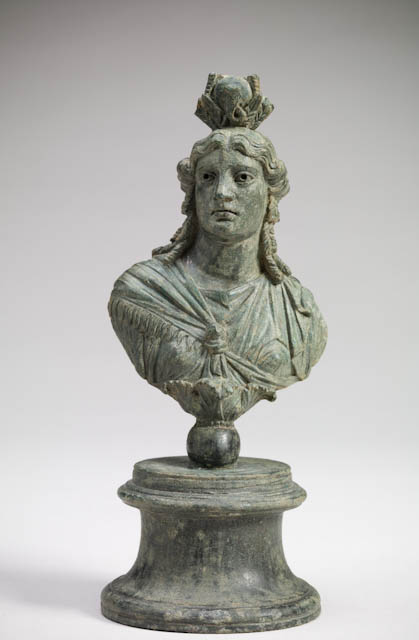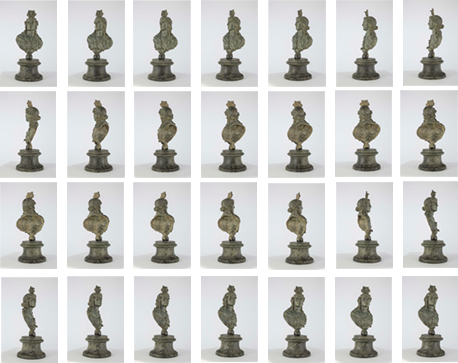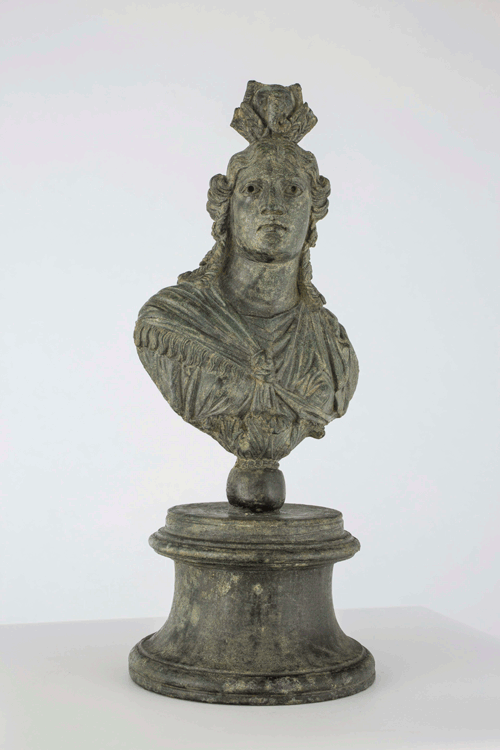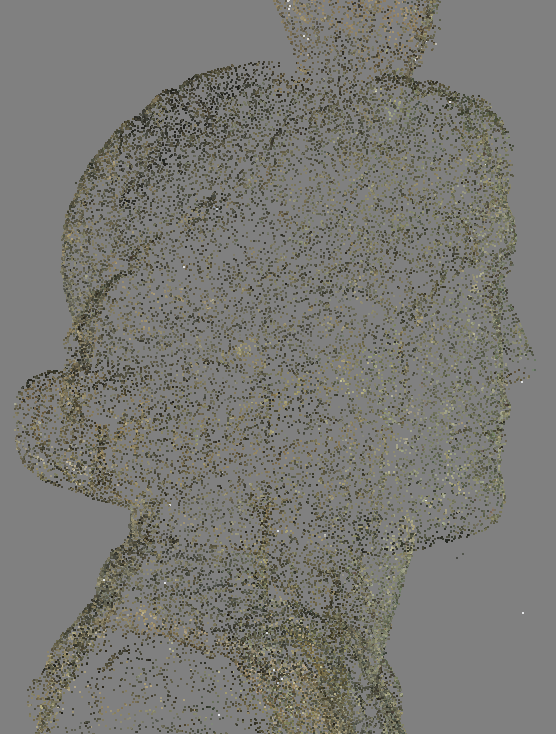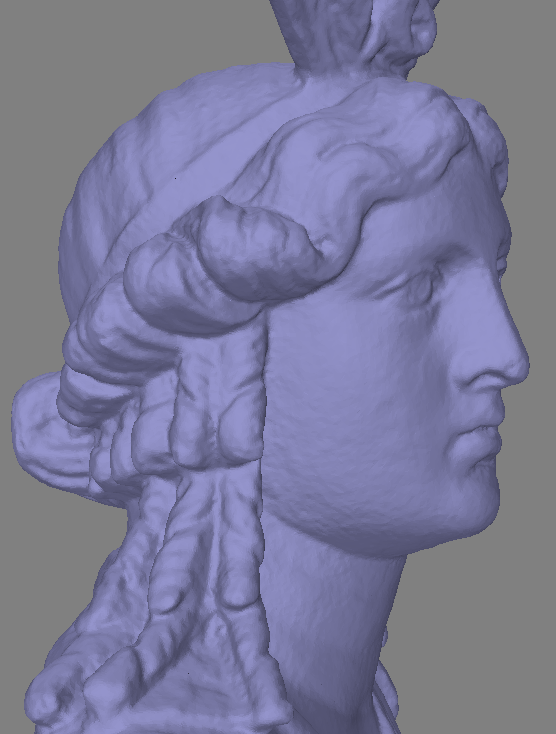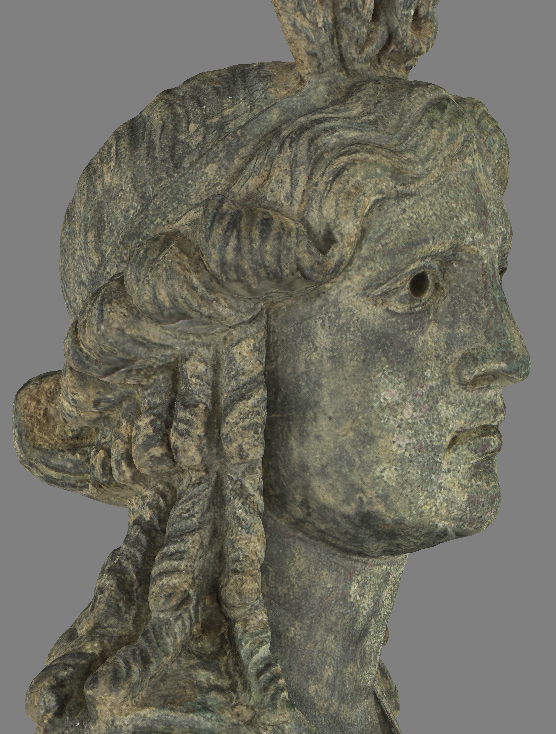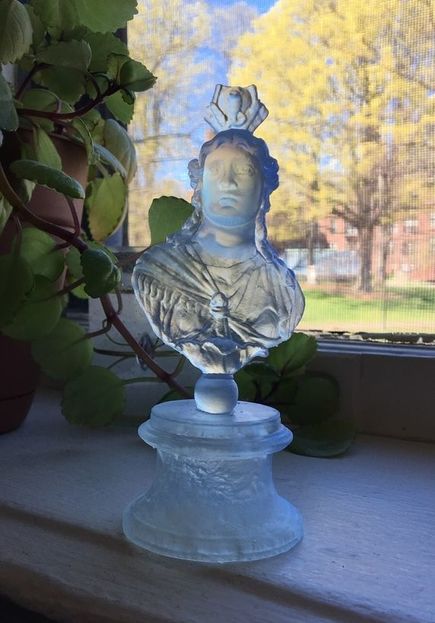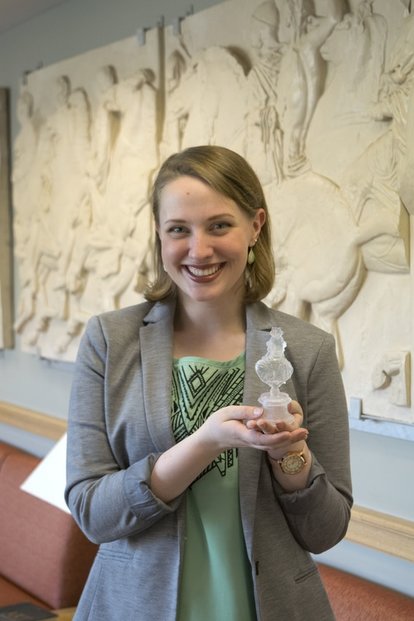Each object in the digital collection has been chosen for a specific reason or to address a certain issue. For this project, I was drawn to the “ordinary” and “everyday” objects that have lost their context and sense of original use by being in a static museum display. This includes objects that would have been worshiped or considered divine but have been “demoted,” in a sense, to an art piece.
I was also interested in the intricate and overlooked aspects of smaller objects that often go unnoticed by visitors to an exhibit. In many museums, visitors experience sensory overload as they view hundreds of objects in a short period of time. As a result, they often miss interesting and key details and their experience becomes one of quantity over quality. In addition, many objects are difficult to display because they are uniquely multi-dimensional. All objects in my digital collection are in a contained space with a fixed static perspective or not on view and unable to tell their full stories and be fully appreciated.
One way to overcome these limitations is through scholarly research to learn why an object was made, its purpose, and how it would have been used. On this website, I have provided historical and cultural context for all the objects in my collection. I would argue, however, that a better way to learn about these objects is to see them differently – through a 3D model.
The objects in this collection have been split into three categories: sculpture, ceramics and tools, and coinage. Explore these pages for a closer look at the objects in 3D and to learn about their history and how they were made.
I was also interested in the intricate and overlooked aspects of smaller objects that often go unnoticed by visitors to an exhibit. In many museums, visitors experience sensory overload as they view hundreds of objects in a short period of time. As a result, they often miss interesting and key details and their experience becomes one of quantity over quality. In addition, many objects are difficult to display because they are uniquely multi-dimensional. All objects in my digital collection are in a contained space with a fixed static perspective or not on view and unable to tell their full stories and be fully appreciated.
One way to overcome these limitations is through scholarly research to learn why an object was made, its purpose, and how it would have been used. On this website, I have provided historical and cultural context for all the objects in my collection. I would argue, however, that a better way to learn about these objects is to see them differently – through a 3D model.
The objects in this collection have been split into three categories: sculpture, ceramics and tools, and coinage. Explore these pages for a closer look at the objects in 3D and to learn about their history and how they were made.
Case Study: Bust of Isis
The Problem
Unlike most objects in my collection, the Bust of Isis is on display. The bronze statuette is currently located in a wall case among other small Greek and Roman objects that is sunken into the wall with bright surrounding lights. It would have originally been viewed in a dim, flame-lit room by the hearth or in ambient natural light outdoors. The bright lights in the exhibit remove this context. As the Bust of Isis is a mere 11.4 cm tall, this once sacred and worshiped statuette can get lost among other miscellaneous pieces of history. The glass of the case and the placement of the object creates a physical barrier between it and the viewer, making it difficult to see all of its intricately sculpted craftsmanship. There is realism and texture that, though slightly worn with time, is still very striking.
The solution
|
Minute details and iconography can be made more visible from looking at the 3D model. The Bust of Isis’ unique hairstyle and clothing come to life. The viewer can zoom in and out and turn the object weightlessly in a digital space. This grants the ability to view the object from any angle, revealing parts of the object that cannot be seen safely in a museum display. The viewer can also change the lighting and environment to understand how this object would have been originally seen. One can change the background to further re-contextualize the object to a softer light or an indoor or outdoor space.
Further investigation can be done into understanding the manufacture by not only zooming into the object and moving it around freely for a closer look, but also by stripping the object of its coloring to its most basic form. This can be done by going to the settings on the model and switching the rendering to mesh or to matcap. Tool marks and other signs of craftsmanship can be seen more easily by the naked eye from this perspective. For this model, the smooth exterior and hollow cavity below the neck of the bust show that this object was a hollow-cast. |
The Process
As mentioned, photogrammetry is used to create these 3D models. Click here for an in-depth look at this method.
When photographing each object, it is important to consider its delicacy and weight. If an object is too heavy to turn over or is too fragile to position in a certain way, some information may be lost, but only for the sake of the original. In this model of the Bust of Isis some information on the bottom is lost, but in this case, nothing vital to the composition of the piece nor something that would have originally been seen.
When photographing each object, it is important to consider its delicacy and weight. If an object is too heavy to turn over or is too fragile to position in a certain way, some information may be lost, but only for the sake of the original. In this model of the Bust of Isis some information on the bottom is lost, but in this case, nothing vital to the composition of the piece nor something that would have originally been seen.
This object is small and light, so it was placed onto a turn table. Photographs were taken of this object from straight on, slightly above, and slightly below, and also from the bottom. It is helpful to think of your camera as a scanner.
Once these photographs have been processed and color-corrected, they are put through a photogrammetry 3D modeling program. I used Agisoft PhotoScan. The steps the software goes through to create a model from photographs is like making a sculpture. The first step, the point cloud, is like the armature or skeleton of the sculpture. The next step is building the mesh, which is like adding the clay. This layer appears smooth to the naked eye but is in fact millions of small polygons that resemble wire mesh. The last step is adding the texture, like paint. When the model is completed it can be uploaded to websites like Sketchfab or imported to other modeling programs where the environment and lighting situations can be changed.
Once these photographs have been processed and color-corrected, they are put through a photogrammetry 3D modeling program. I used Agisoft PhotoScan. The steps the software goes through to create a model from photographs is like making a sculpture. The first step, the point cloud, is like the armature or skeleton of the sculpture. The next step is building the mesh, which is like adding the clay. This layer appears smooth to the naked eye but is in fact millions of small polygons that resemble wire mesh. The last step is adding the texture, like paint. When the model is completed it can be uploaded to websites like Sketchfab or imported to other modeling programs where the environment and lighting situations can be changed.
Additionally, tactile learners can further benefit from 3D digitization of objects because they can be easily printed using a 3D printer. Much like the original use for plaster cast collections, replicas can once again be physically handled and studied in the round.
